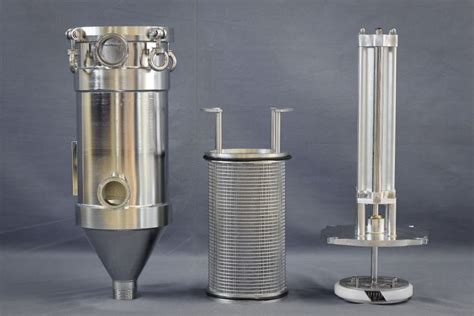The Complete Guide to Food and Beverage Filtration
Filtering is a critical step in ensuring the quality and safety of food and beverages. Whether you're a home cook or a large-scale food producer, understanding the different types of filters and their applications is essential. This comprehensive guide will explore the world of food and beverage filtration, covering various methods, their benefits, and considerations for optimal results.
Types of Food and Beverage Filters
The choice of filter depends largely on the specific application and the desired outcome. Here are some common types:
1. Membrane Filters: These filters use semi-permeable membranes to separate particles based on size. Different pore sizes allow for the removal of bacteria, yeast, viruses, and other contaminants. They are commonly used in:
- Microfiltration (MF): Removes larger particles like bacteria and yeast. Effective for clarifying juices and beer.
- Ultrafiltration (UF): Removes smaller particles like proteins and viruses. Used in whey protein purification and water treatment for beverage applications.
- Nanofiltration (NF): Removes even smaller particles, including salts and sugars. Useful for desalination and removing unwanted minerals from water.
- Reverse Osmosis (RO): The most effective membrane filter, removing almost all dissolved solids and impurities. Often used in water purification for high-quality beverages.
2. Depth Filters: These filters utilize a porous medium with a complex structure to trap contaminants throughout the filter depth. They are generally less precise than membrane filters but offer high flow rates and capacity. Examples include:
- Cartridge Filters: Commonly used in various food and beverage applications for removing sediment and larger particles.
- Diatomaceous Earth (DE) Filters: Utilize a natural, porous material to remove fine particles. Effective for clarifying wine, beer, and juices.
3. Gravity Filters: These are simple, low-cost filters that rely on gravity to pull liquid through a filter medium. While effective for basic filtration, they may not remove all contaminants. They are frequently used in:
- Home brewing: Removing larger sediment from wort before fermentation.
- Water filtration (simple applications): Removing sediment and chlorine from tap water.
Selecting the Right Filter for Your Needs
Several factors determine the best filter for your application:
- Type of beverage or food: Different products require different levels of filtration. Wine requires a different filter than juice.
- Desired clarity and quality: The level of filtration needed depends on the desired outcome. High-clarity beverages require finer filtration.
- Particle size and type: Understanding the contaminants you need to remove is crucial for selecting the correct pore size or filter type.
- Flow rate and capacity: Consider the volume of liquid you need to filter and the desired processing time.
- Cost and maintenance: Different filter types have varying costs and require different levels of maintenance.
Maintaining Your Filters
Proper filter maintenance is crucial for optimal performance and longevity. Regular cleaning and replacement schedules are essential to prevent clogging and ensure consistent filtration quality. Always follow the manufacturer's instructions for cleaning and replacement.
Conclusion
Food and beverage filtration is a multifaceted process with many options available. By understanding the various filter types and their applications, you can select the optimal solution for your specific needs. Remember to carefully consider factors like desired outcome, contaminant types, and budget when making your choice. With proper selection and maintenance, filtration ensures the safety and quality of your food and beverages.
